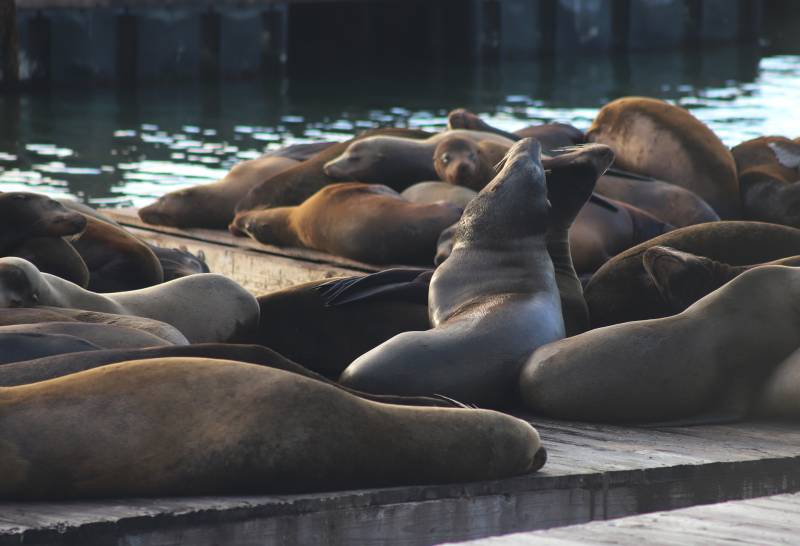Last week, more than a thousand sea lions sunned on the docks at San Francisco’s Fisherman’s Wharf, forming the largest herd in over a decade. On Tuesday, though, the area was noticeably devoid of their barks.
According to Sue Muzzin, vice president of public relations for Pier 39, the sea lions were temporarily spurred away by marina staff tightening bolts on multiple floating docks as part of routine maintenance work — though it’s possible all that extra weight over the last week put more wear and tear on the docks.
“The sea lions jump into the water, they don’t freak out, they’re used to this,” Muzzin told KQED. “It’s a regular routine maintenance check that we always do. And — there’s a little bit more stress on the floats these days.”
By Wednesday morning, Pier 39’s live webcam showed the sea lions back to their normal behavior, though in slightly lower numbers than last week.
The pier typically hosts between 300 and 400 sea lions in the winter and up to 700 in the summer, harbormaster Sheila Candor told the Associated Press. Last week’s surge to over 1,000 is the highest recorded number at the site in the last 15 years.
